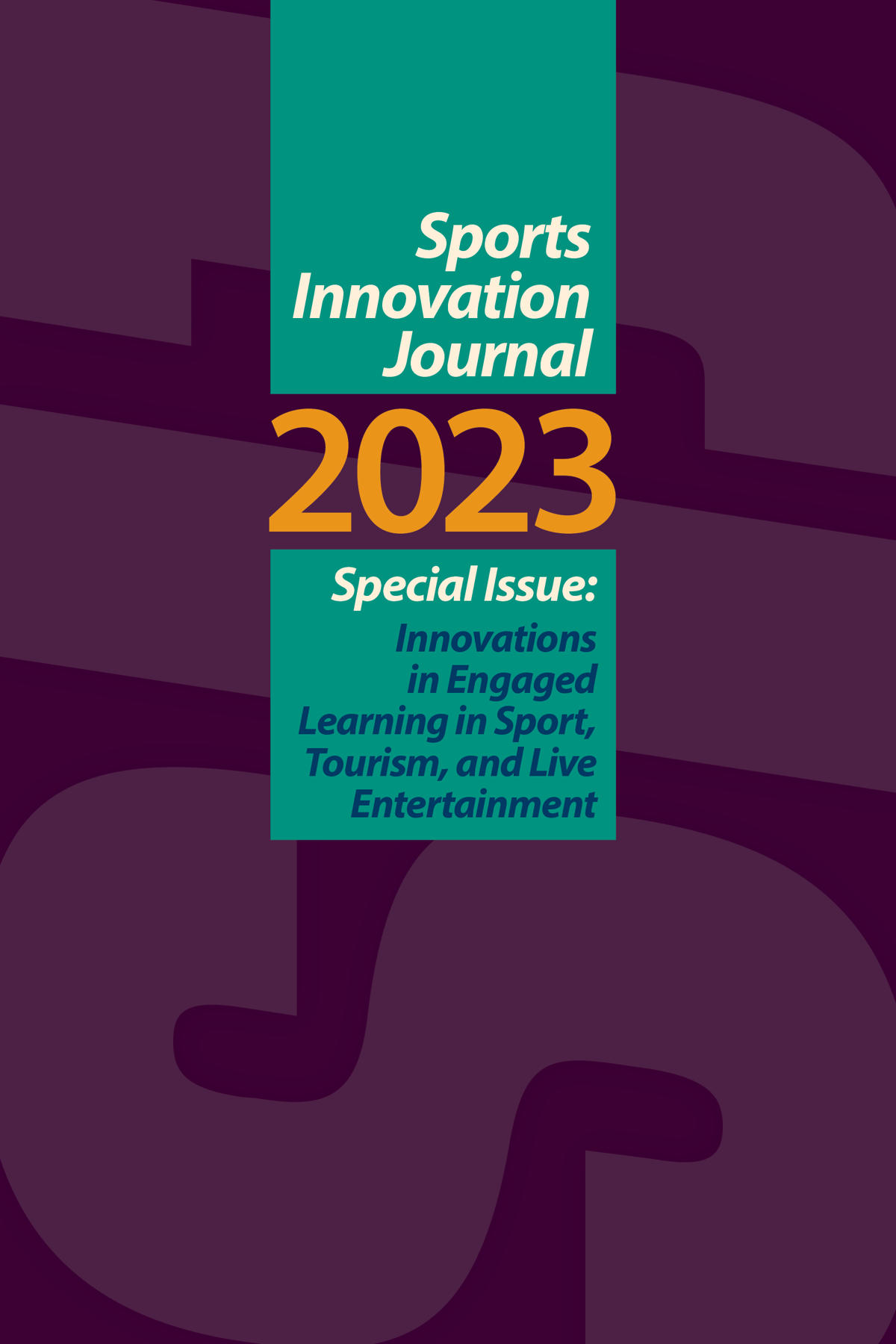Why Living in a Sport Management Learning Community Matters
DOI:
https://doi.org/10.18060/27403Keywords:
living learning communities, relationships, student involvementAbstract
Living learning communities (LLCs) improve students’ social connection and involvement through intentional planning and relationships with faculty and peers. This case study explored student experiences in a living learning community known as the Sport Management and Media Living Learning Community (SMM LLC) at Elon University. Informed by the research about best practice for living learning communities (Inkelas, et al., 2018) and the mattering of relationships (Felton & Lambert, 2020), the study explored students’ perceptions of living in the SMM LLC. The focus group and interviews revealed students’ experiences focused on the importance of relationships with faculty and peers that matter. The findings revealed two themes - the SMM LLC as a place to develop community and friendships and catalyst for involvement. The study offers implications and opportunities for future research and practice for why sport management faculty should implement LLCs at their university to enhance the student experience through an intentional engaged learning design.
References
Astin, A. (1985). Achieving educational excellence: A critical assessment of priorities and
practices in higher education. San Francisco: Jossey-Bass.
Benjamin, M., Jessup-Anger, J. E., Lundeen, S. & McFadden, C. (2019). Elon statement on
residential learning communities as a high-impact practice. Retrieved from http://www.centerforengagedlearning.org/elon-statement-on-residential-
learning-communities/
Creswell, J. W., & Poth, C. N. (2018). Qualitative inquiry and research design: Choosing
among five approaches (4th ed.). Thousand Oaks, CA: Sage.
Felten, P. & Lambert, M. (2020). Relationship-rich education: How human connections drive
success in college. Johns Hopkins University Press.
Gansemer-Topf, A. M., Stern, J., & Benjamin, M. (2007). Examining the experiences of second-
year students at a private liberal arts college. In B. F. Tobolowsky & B.E. Cox (Eds.), Shedding light on sophomores: An exploration of the second college year (Monograph No. 47, pp. 31-48). University of South Carolina, National Resource Center for the First-Year Experience and Students in Transition.
Inkelas, K. K., Jessup-Anger, J. E., Benjamin, M., & Wawrzynski, M. R. (2018). Living-
learning communities that work: A research-based model for design, delivery, and assessment. Stylus.
Kilgo, C. A., Ezell Sheets, J. K., & Pascarella, E. T. (2015). The link between high-impact
practices and student learning: Some longitudinal evidence. Higher Education, 69, 509-525. https://link.springer.com/article/10.1007/s10734-014-9788-z
Kuh, G. D., (2008). High-impact educational practices: What they are, who has access to them,
and why they matter. Washington, DC: Association of American Colleges and Universities.
Kuh, G. D., Kinzie, J., Schuh, J. H., Whitt, E. J. (2005). Student success in college: Creating
conditions that matter. Washington, DC: American Association of Higher Education.
Lincoln, Y. S., & Guba, E. G. (1985). Naturalistic inquiry. Sage.
Merriam, S. B., & Tisdell, E. J. (2016). Qualitative research: A guide to design and implementation (4th ed.). Jossey-Bass.
NLCA. (n.d.) About the learning communities association. National Learning Communities
Association. https://www.lcassociation.org/about-us.html
Rehak, A. M. (2018). Becoming and being an inspire student: learning, participation, and
engagement in a living-learning community (Doctoral dissertation, Indiana University). https://www.proquest.com/docview/2136291265/fulltextPDF/4D2110247E814974PQ/1?accountid=10730
Ribera, A. K., Miller, A. L., & Dumford, A. D. (2017). Sense of peer belonging and
institutional acceptance in the first year: The role of high-impact practices. Journal of College Student Development, 58(4), 545-563. https://muse.jhu.edu/article/663307/pdf
Rossman, G. B., & Rallis, S. F. (2003). Learning in the field: An introduction to qualitative
research. Thousand Oaks, CA: Sage.
Schwandt, T. A. (2015). The Sage dictionary of qualitative inquiry (4th ed.). Sage.
Spanierman, L. B., Soble, J. R., Mayfield, J. B., Neville, H. A., Aber, M., Khuri, L., & De La
Rosa, B. (2013). Living learning communities and students’ sense of community and belonging. Journal of Student Affairs Research and Practice, 50(3), 308-325.
Strayhorn, T. L. (2019). College students' sense of belonging: A key to educational success for
all students. Routledge
Tinto, V. (2003). Learning better together: The impact of learning communities on student
success. Higher Education monograph series, 1(8), 1-8. https://www.seattleu.edu/media/center-for-faculty-development/files/LearningBetterTogether4874.pdf
Zhao, C. M., & Kuh, G. D. (2004). Adding value: Learning communities and student
engagement. Research in Higher Education, 45, 115-138.
https://link.springer.com/content/pdf/10.1023/B:RIHE.0000015692.88534.de.pdf
Downloads
Published
Issue
Section
License
Copyright (c) 2023 Cara Lucia, Mimi Benjamin, Shaina Dabbs, Mark Cryan

This work is licensed under a Creative Commons Attribution 4.0 International License.
Copyright to articles published in Sport Innovation Journal is retained by the author(s).


